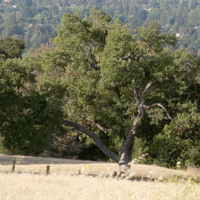This page explains the principles behind the proposed changes and then lists the changes themselves further down.
General Principles Driving Proposed Changes
Retain measures that discourage the arbitrary removal of protected species of trees. Maintenance and hazard mitigation do not classify as arbitrary.
Remove disencentives to planting protected species of trees that are the unintended consequence of today's odinance and it's implementation by the city.
Recognize the difference between tree actions in support of development and actions resulting from maintenance where maintenance is defined as those activities needed to keep a tree healthy, provide hazard mitigation or respond to a catastrophic failure, or deal with an overwhelming disease such as Sudden Oak Death.
Tree actions proposed as a result of development should follow the current ordinance since these actions are optional and result in some benefit to the owner or developer. Tree actions resulting from maintenance are controlled by the changes proposed below. Development activity that benefits from a maintenance action should either wait 2 years between the maintenance action and permit submittal for the development activity that would have been impacted by the tree in question or follow the development rules. This would avoid loss of disincentives included in the current ordinance for economically motivated tree removal while addressing the the undue burden currently placed on homeowners.
Recognize that owners of protected trees already incur non-trivial costs to maintain their trees. The public benefits from these added expenses in ways identified in the current tree ordinance without compensating owners of these trees. A maintenance action should not result in the city adding to the financial burden by subjecting the owner to expenses non-owners are not subject to.
Recognize that a given property can only support so many trees of this class. Protected trees are prized for their size and the impact of that size when fully grown must be taken into account. The city should not force wasteful over planting that will have to be removed later. (The current city policies are especially troublesome in this area as they can lead to a geometric increase in tree density or the unfair funding of trees off-property).
Scale back city requirements to be consistent with what is actually stated in the ordinance. If the ordinance states that something may be required, don't make it always required. This makes sure that the actual intent of an ordinance is made public and our elected representatives are held accountable for what the city is actually doing as a result of an ordinance.
Make the costs for services in line with what is commonly commercially available. Either allow the owner of a protected tree to satisfy the requirements of the ordinance by using services meeting the standards spelled out in the ordinance or change the ordinance to specify specific providers. If the later, specify that the cost of those providers can be no higher than 15% over the average for those services in the San Francisco Bay Area.
